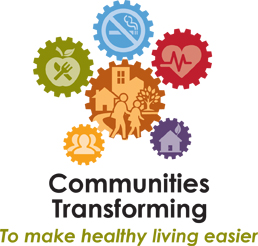Investigators: Dr. Michael Kanters (PI), Dr. Jason Bocarro (Co-PI), Dr. Myron Floyd (Co-PI), Dr. Thom McKenzie, Dr. Luis Suau.
Project Manager: Troy Carlton
Brief overview:
The North Carolina CTG project was formed to create healthier communities by making healthy living easier and more affordable where people work, live, and play. The HWB research group served as external evaluators for one of the active living strategies in the project: increase the number of Shared Use Agreements (SUAs) adopted that increase access to physical activity opportunities. The primary goal of the project was to determine the SUA impact on physical activity across NC and identify strategies for expanding SUAs to improve overall community health.
Executive Summary:
Partnerships between school districts and community-based organizations that facilitate shared use of recreation facilities can be an effective strategy for increasing physical activity. The NC Division of Public Health was awarded a Community Transformation Grant (CTG) to support public health efforts to reduce chronic diseases, promote healthier lifestyles, and reduce health disparities. The CTG project’s goal was to create healthier communities by making healthy living easier and more affordable where people work, live, learn, and play. The HWB research group served as external evaluators for one of the active living strategies in the CTG project: increase the number of Shared Use Agreements (SUAs) adopted that increase access to physical activity opportunities. The primary goal of the project was to determine the SUA impact on physical activity and identify strategies for expanding SUAs to improve overall community health.
The team conducted an initial audit of the extent of shared use by surveying all public school principals within the 10 collaborative regions established for the North Carolina CTG project. Findings from the statewide audit were used to construct a sample of low-income/rural communities to assess the impact of SUAs. A new Apple application was developed called “iSOPARC” to better obtain objective data on the number and characteristics of participants in recreation and sport settings, including their physical activity levels. The app was used on iPad minis at 20 public school locations. Upon project completion, the HWB research group were able to conclude that school facilities are greatly underutilized during after school hours and on weekends, leaving ample opportunities for recreation and sport facilities to be formally shared with community groups when they are not being used by the school. Lastly, when schools had more structured shared use programs in place, more active people were observed using the facilities, supporting the concept of SUAs as a potential strategy for increasing accessible places for physical activity.

